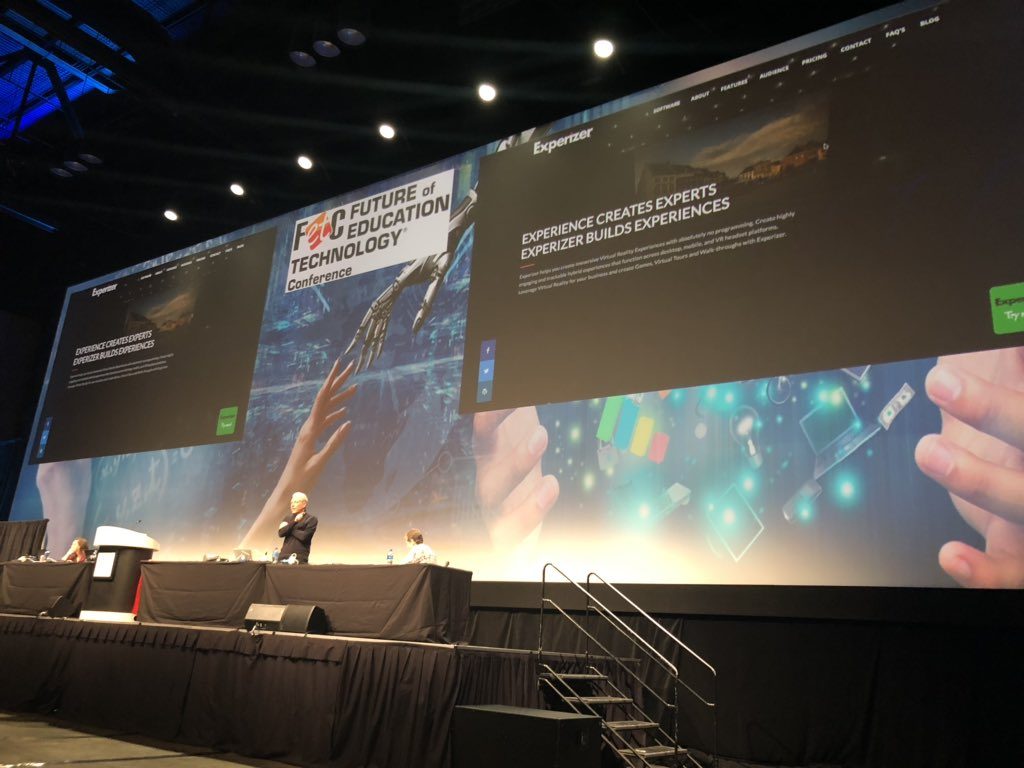
In a fast-changing world, updating learning content to keep up with the times has become extremely critical. Since corporate training drives corporate advantage, if you don’t stay on top of the latest in the learning landscape, you stand the risk of a misinformed workforce, problems around compliance and issues scaling knowledge — which can ultimately damage your company and its reputation. On the other hand, impactful and engaging training can bring in massive enhancement in the workforce productivity. Given the fact that a majority of today’s workforce is made up of millennials, expectations from training have changed – today’s learning solutions need to be on-demand, accessible across devices and platforms, and highly immersive in addition to offering collaborative learning, and personalized experience.
Virtual Reality or VR is picking up immense steam in the corporate training space; reports suggest that by 2023, the AR ands VR market is set to reach $9.9 billion. By bringing real-life simulation into the classroom environment, VR is making training extremely immersive, engaging and interactive. Realistic simulations can help employees participate in role plays, understand the nuances of a particular job and make risk-free decisions. From placing employees in hard-to-reach and unfamiliar places to enabling interactive office tours, learning the nuances of operational tasks to providing safety drills, enabling risky situational demos to transparent risk assessments – the use cases of VR in corporate training are plenty, that can enable employees to carry out real-life tasks and receive real feedback.
Here are 5 reasons why VR is right for your corporate training: 1. Onboarding: VR also finds great application in the employee onboarding process. Since onboarding is the first experience of office life, with VR, you can provide new employees with an introduction to the company, take them on an office tour of the premises, enable them to view multiple business locations, meet their remote managers in real time, and much more – all this from their onboarding location or even from the comforts of their home, before they’ve even stepped foot in office. A company with a robust and effective onboarding process is more likely to have higher employee retention levels and productivity while making the process more efficient and enjoyable and reducing costs with a standardized process across locations.
2. Experiential learning: With experiential learning being one of the most effective ways to learn, VR aids in developing a range of business skills through practice. By providing a safe space to learn by experience, employees can develop skills across myriad jobs – from public speaking to sales, negotiation to networking – aspects that are rarely taught to employees. Since it is these simple enterprise skills are what managers look for in employees and that keep businesses running, VR enables you to bridge the skills gap and inculcate enterprise skills within your employees. With VR, employees can practice what they’ve learned in the courses through realistic simulations such as networking events, job interviews, and speaking in meetings and at conferences and receive instant feedback. For example, to hone public speaking skills, employees can record their speeches, and receive instant feedback on their communication skills, eye contact, use of filler words, pitch, pace, and more. Using this as a benchmark, they can further hone their skills and improve their scores.
3. Safety training: VR be used to develop on-the-job skills but also increase knowledge of occupational safety and avoid on-the-job accidents. Earlier, employees in risky manufacturing setting, mines and nuclear reactors would have to imagine a high-risk scenario and visualize how they would cope with it. However, VR removes the need to imagine a difficult situation and instead replaces it with realistic simulation. By placing employees in the high-risk situation, it enables an effective learning experience by training them in the most realistic way possible, without the situation actually happening in real life. For instance, oil companies can train employees on emergency exit procedures at their oil refineries. Employees can learn aspects of safety training in a risk-free virtual environment, make more informed decisions at a quicker rate and reduce the chances of mistakes in the real world – mistakes which could even be fatal.
4. Compliance training: VR can also be efficiently used for compliance training; by providing an immersive, repeatable experience, you can not only demonstrate compliance requirements but also reinforce the implications of non-compliance. Using role plays, employees can participate in compliance dilemmas and see how they would react, how well they understand the repercussions of their actions and the effects of non-compliance; you can then challenge workers on their knowledge, view their progress and identify strengths and areas for improvement. For example, for diversity and inclusion training, you can replicate real-life scenarios to minimize unconscious bias and enhance communication between employees when confronted with discrimination.
5. Leadership and Crisis Management: Gone are the days when managers could be trained on how to tackle crisis situations through a series of classroom sessions. Companies today can use the power of VR to create (almost) real-world situations and scenarios and teach the managers and business leaders about handling difficult situations and manage stress levels during the simulated crisis situations. This helps companies to truly prepare their top brasses for worst case situations.
Enhance employee skills
Most employees don’t look forward to corporate training – sitting in a boring classroom, staring at a huge desk of slides is not anyone’s cup of tea. With VR, you can bid adieu to boring and mundane training courses and a big hello to immersive simulations. The employees can safely make mistakes and learn from them and master critical skills with minimal risk to your business and operations. Whether you’re looking to train a new staff member, demonstrate a new product or looking to change a process across your organization – VR provides a realistic and safe training environment for better engagement and memory retention.



